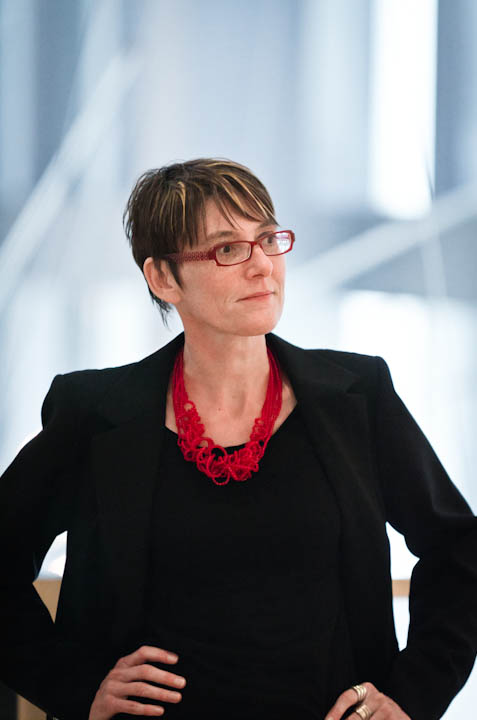Dawoud Bey and Carrie Mae Weems: Artists, Friends, and Inspirations
Two young artists meet in a photography class and become friends. It happens all the time. But the two people aren’t always Dawoud Bey and Carrie Mae Weems, who from that meeting at the Studio Museum in Harlem in 1976 would go on to become two of the most celebrated photo-based artists working today. Over the next 46 years, Bey and Weems pursued their own practices, their artistic interests overlapping and diverging as they continued to be sources of friendship and inspiration to each other. Dawoud Bey & Carrie Mae Weems: In Dialogue, coming to SAM as part of a national tour, marks the first time their work—the subject of numerous solo and group exhibitions—has been shown in dialogue together. You are invited into their career-long conversations about art, culture, and history, all grounded in the lived experiences of Black Americans.
In Dialogue is organized in five thematic pairings. It explores the artists’ early work, as both Bey and Weems captured scenes of street life and domestic scenes with passers-by and family as subjects. Weems’ groundbreaking Kitchen Table series (1990), a fictional photo essay about women and their self-perceptions, signals a new direction combining text and image.
The artists have a mutual interest in the history of Black people in America and how history and lived experience manifests in landscapes and urban environments. Sites of historical importance surface in other contexts: Weems’ Sea Islands series (1991–1992) features locales of Gullah culture on the islands off the coasts of Georgia and South Carolina. To her lyrical images she adds accounts of oral history, mythology, and song. The history of slavery is confronted in Weems’ representations of 19th-century photographs of enslaved people—jarring images that turned the individuals into objects of racist study. In contrast, Bey’s Night Coming Tenderly, Black series (2017) turns the viewer in the position of a fugitive, arriving at nightfall at sites that were thought to be on the Underground Railroad, a network aiding enslaved people to freedom during the 19th century. In Weems’ most recent series, Roaming, she stages her own body within the city of Rome—a reminder of the city’s history, power, conquest, and domination from ancient to modern times.
Also on view in the exhibition are works that express the importance of commemoration in Black culture. Bey’s Birmingham Project (2019) memorializes the deaths of six young Black Americans murdered in the Alabama city in 1963, with portraits of present-day Birmingham-area children placed in diptychs with adults at the age the young people would have been today. Weems’ Constructing History series (2008) focuses on well-known images of 20th-century tragedies such as the assassinations of Martin Luther King, Jr. and John F. Kennedy, reenacting them with students and community members in Atlanta.
“The work of these two artists and friends have never been more relevant as we consider the meaning of multiple histories in our lives and surroundings,” says Catharina Manchanda, SAM’s Jon and Mary Shirley Curator of Contemporary Art.
– Rachel Eggers, SAM Associate Director of Public Relations
This article first appeared in the October 2022 through January 2023 article of SAM Magazine and has been edited for our online readers. Become a SAM member today to receive our quarterly magazine delivered directly to your mailbox and other exclusive member perks.
Photo: Couple in Prospect Park, 1990 (printed 2018), Dawoud Bey, American, born 1953, gelatin silver print, 21 7/8 x17 ½ inches, Grand Rapids Art Museum, museum purchase, 2018.22. © Dawoud Bey, courtesy of Stephen Daiter Gallery.
